
In 2023, I wrote a series of monthly articles, and their key purpose was to help all readers increase their understanding of sustainability, learn from the experiences of others and help them deliver sustainable practice in their own organisations and operations. In this new series, I am taking the opportunity each month to look in more depth at individual organisations. How are they seeking to be more sustainable and, importantly, how are they seeking to advise and support members or customers?
This month we focus on the parks sector based upon discussions with two key players operating in South Derbyshire and Birmingham.
Chris Worman is parks and green spaces manager for South Derbyshire District Council. He has a wealth of experience. His responsibilities include the management of a 154 acre Forest Centre as well as over 100 acres of green space as parks or similar public areas. From the outset when meeting with him, he discusses the need for a pragmatic approach, a careful balancing of the need to be both more sustainable and achieve climate targets whilst bringing the public along with what is done and the changes it will bring.
South Derbyshire has declared an ecological emergency and is managing its parks pesticide free, except for the control of invasive species such as Japanese Knotweed where herbicides currently remain the only practical solution. However, living without pesticides poses some challenges in parks maintenance. More hand hoeing is needed and there must be an acceptance of levels of weediness. This needs careful explanation both to users and those in authority. There has also been more attention to the management of landscapes linked to their use. Bark is now used much more on borders in the parks to suppress weed growth and there has been increased use of green waste and recycling on site. Leaves for example are still raked but not taken off site; rather composted and re-applied to beds.
Grass cutting and choice of plants
In terms of grass cutting, again pragmatism is the rule. Grass is left around trees and there has been much reduced mowing, especially out of the holiday seasons. This has resulted in some public comment and, again, Chris believes in dealing with these issues on a case by case basis and accepting certain areas still need close cutting to meet their use. Within the forest land and boundaries, there has been areas left to encourage wildlife and biodiversity but Chris insists that they still need managing to avoid them becoming infested with brambles and other dominant species.
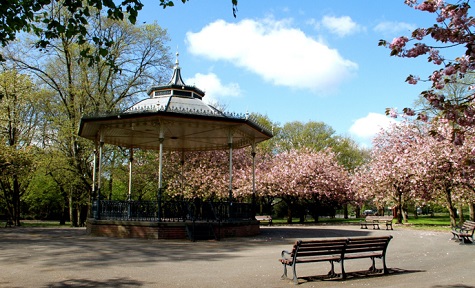
On planting beds, the emphasis is on herbaceous rather than the formal bedding of previous times, although some small areas are maintained in prominent areas. Within the planting, some wildflower mixes are included but again Chris emphasises the need for these to be managed. Choice of plants has also changed with emphasis on plants such as geranium which require less maintenance and watering. The emphasis is on colour and diversity.
Taking a pragmatic approach
On machinery used, there has been a move to electric battery powered for smaller machines, including leaf blowers. These also have advantages in reducing hand arm vibration to users. However for larger machines, and given the use they get, the authority has for now retained existing machines although developments in electric, lighter batteries and longer life, continue to be monitored. At the Forestry Centre, energy supply is tricky as sources such as solar or heat pumps cannot be used; the option taken has to been to source from suppliers who are 100% green.
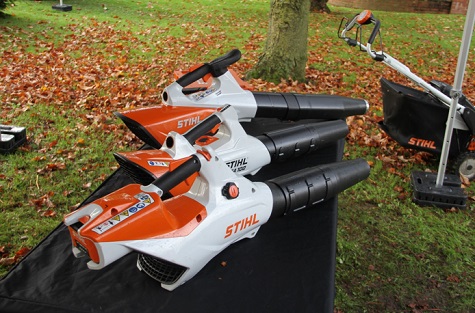
A number of policy developments are resulting in planning of operations to be further reviewed. These include the authority declaring climate and ecological emergencies, an action plan for nature and recent legislation for biodiversity net gain requirements, not least set to strongly influence landscaping decisions in property developments. Chris again emphasise the need for pragmatism of approach and integrated planning. There can be no one solution to suit all situations. If sustainable practice is to be successful, there is a need to bring all sides with you.
Parks in Birmingham
Over in Birmingham, Mike Hinton is district parks manager for Hall Green, Yardley and Hodge Hill. As readers will know, the Birmingham Authority has immense financial pressures and it is important that, whilst parks are maintained to a required standard, this must be achieved in the most effective and efficient manner. Just as in Derbyshire, the authority also has national targets to meet with respect to sustainability and climate change and this must be reflected in planning parks development and maintenance. The following is a summary of Mike’s approach to weed management, mirroring in many ways the principles and approach of Chris Worman.
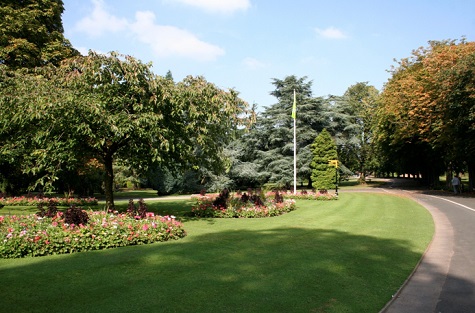
In addressing weed issues in their parks, they have sought to adopt an integrated management approach. This principally focuses on determining, and identifying, acceptable levels of management in specific areas, linked to the intensity and type of use. For example, grass cutting height and frequency used to be very much uniform and standard and undertaken at set times often as part of contract terms. It is now tailored both in frequency and length of cut to the use of a particular area. There has been more voluntary group involvement and increased training and continuous professional development for staff involved.
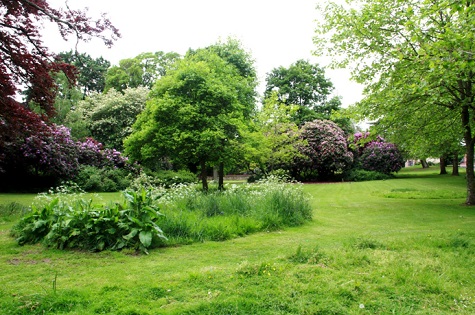
Design and maintenance
Greater consideration to planting and types of plant is given and ensuring new areas of grass are sown or turf laid in the very best conditions. Seasonal bedding is an important feature in terms of impact with a kaleidoscope of colour drawing people to these features. To improve the design, the aim is to have high density planting which will reduce the weed growth, especially in the initial weeks. In terms of shrub borders, the critical aim is to ensure that whatever is planted establishes itself as quickly as possible so that the plant canopy covers the soil in the shortest amount of time. This type of planting is similar to what happens in nature, for example, in a beech wood, there is an overall canopy, then a sub-canopy with medium height shrubs and then, at the edge, there are ground covering plants (the edge effect). The aim is to completely shade out any bare ground that weeds may establish in and this requires good quality plants and high density planting.
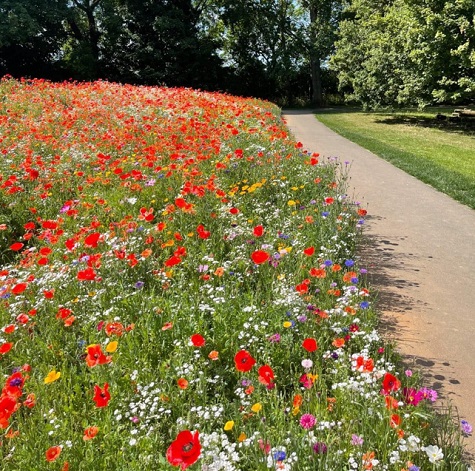
Designing hard landscape features to minimise detritus trapping is also a factor with sweeping regimes fully co-ordinated with other methods used. Other priorities include better timing of operations such as forking/hoeing weeds before they flower and drop seed, and increased density of planting and mulching. Each is a small step in its own right but each provides the pathway to sustainable practice.
Adopting an integrated approach
Mike identifies some key elements to adopting an integrated approach to the management of public spaces such as parks as follows:
Conclusion
Just as for any public green space, managing a park is not easy. The facility has to cater for a wide range of users, all with differing requirements and demands. Managing the surfaces that they walk on, play on and relax upon, means real attention to detail, all within tight budgets, usually significantly diminishing in real terms. The parks also are public assets and communities, demanding more sustainable practices whilst still meeting the requirements for use. In such circumstances it would be easy for the manager to see this as all too big a challenge but, as always, it involves small steps. Having spoken to two leading people who have responsibility for park management at the sharp end, I am confident that the challenge can be met.
Next month’s article plans to focus on the training and qualification sector and specifically the work of Lantra in helping sector deliver sustainable practice.
Previous articles in this series
SUSTAINABILITY IN THE GOLF SECTOR